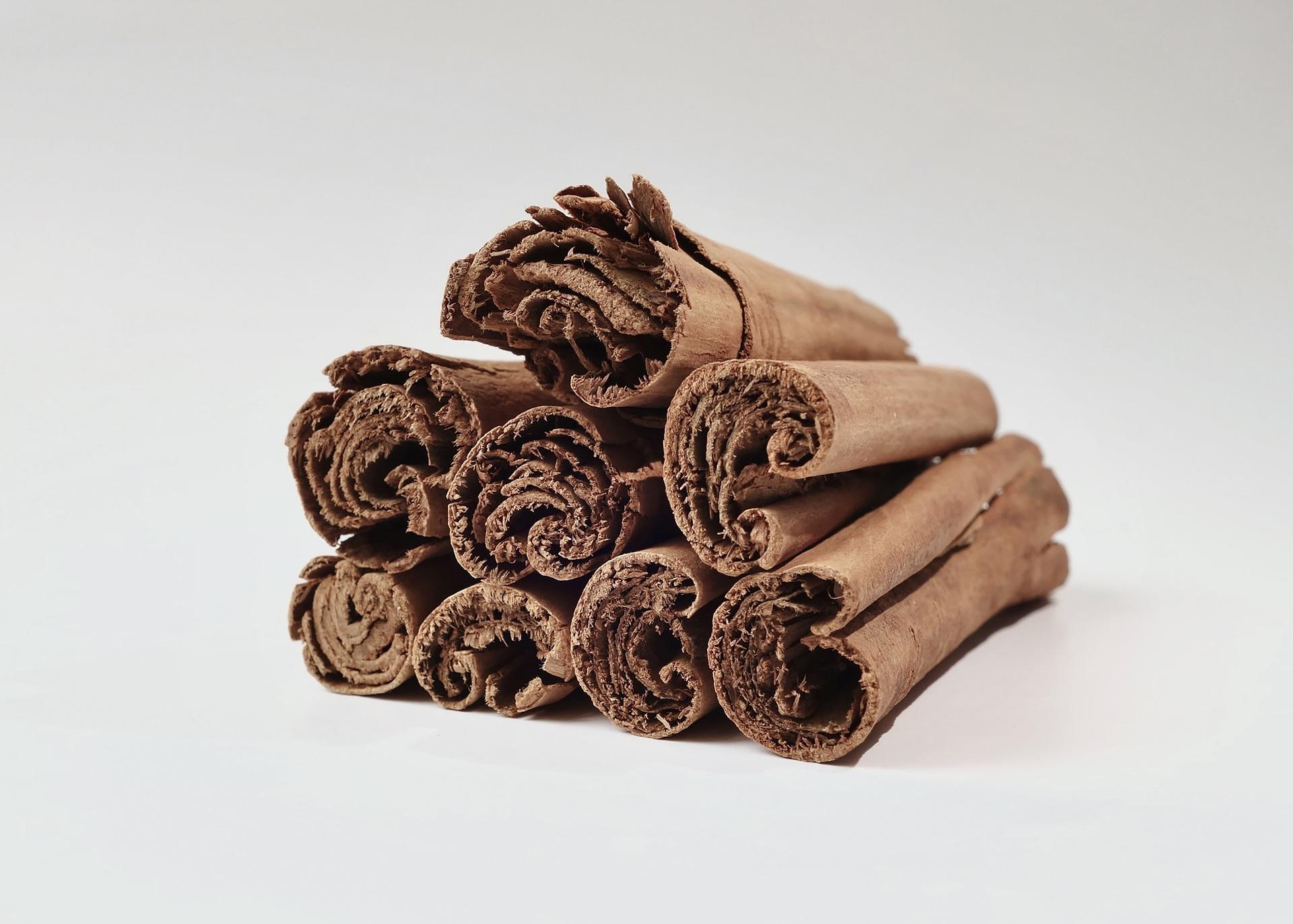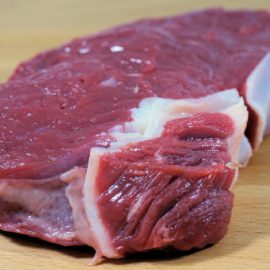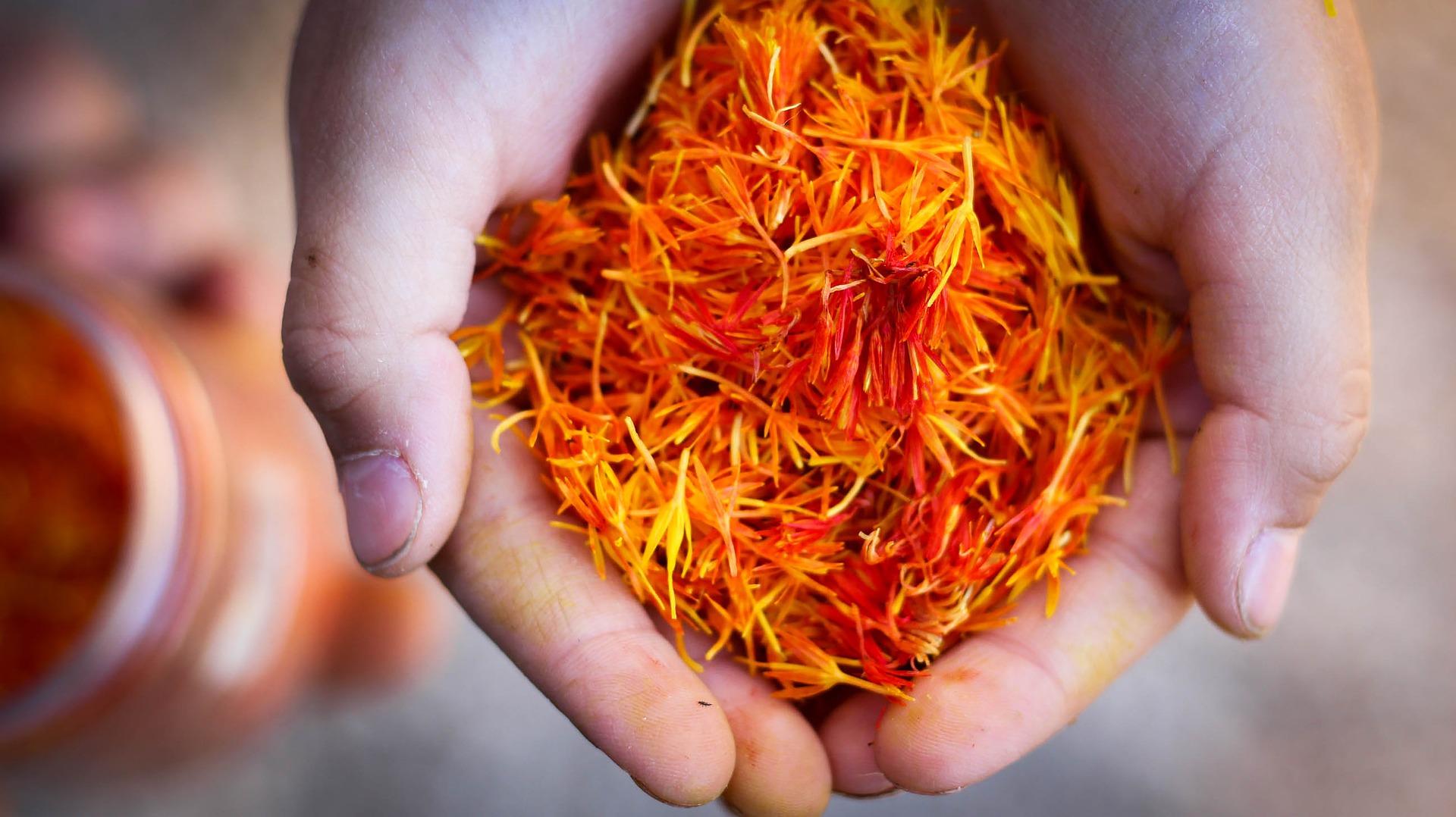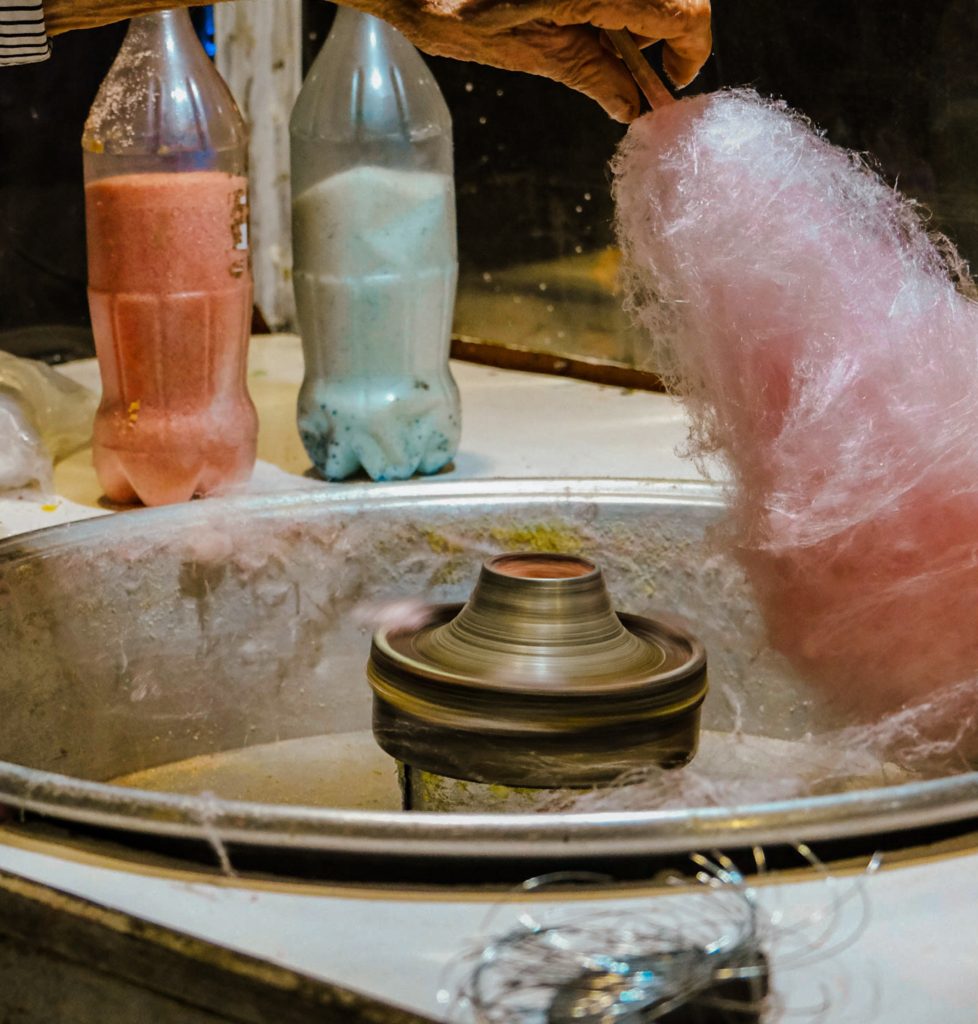
Cotton candy is a popular sugar-based confection. It was invented in the late 19th century and called ‘fairy floss’ by its inventors, American dentist William Morrison and confectioner John C. Wharton. Josef Lascaux, another dentist, coined the term ‘cotton candy’ during the 1920s. National Geographic discusses its history in more detail. Cotton candy is a light and fluffy treat that is a staple at fairs, carnivals, and amusement parks. How cotton candy is made requires some fascinating science.
When you look closely, cotton candy is simply spun sugar, heated to form a liquid sugar mixture. However, the trick lies in how the sugar is heated and spun to generate those light and airy threads. In addition to sugar, food coloring and flavoring can be used to create a variety of colors and flavors, making it appealing to kids and kids at heart.
In a nutshell, cotton candy is made by melting sugar and spinning it through small holes in a cotton candy machine, and allowing it to harden into delicate strands. This method is based on science of sugar crystallization.
In this blog post, we will explore the scientific process behind how cotton candy is made.
HOW IT IS MADE?
The process of making cotton candy begins with heating and melting the sugar. A cotton candy maker or spinner is the machine used to manufacture cotton candy. A heating element in the spinner melts sugar or a sugar-based combination into a liquid form. The spinning drum also helps to distribute the heat evenly, preventing the sugar from burning. If you wish to make cotton candy, a candy temperature should help. In practice, the temperature for cotton candy making is at least 260°F (127°C).
Once the sugar has melted, it is ready to be spun into cotton candy. The spinning drum has minute holes to allow liquid sugar to flow out. The sugar is spun at high rates in the machine, causing it to be drawn into long, thin strands. Then, the strands are gathered to form a larger mass of cotton candy.
This can be collected on a spinning cone, a bowl, or wooden stick, where the strands continue to build up until the desired amount is achieved.
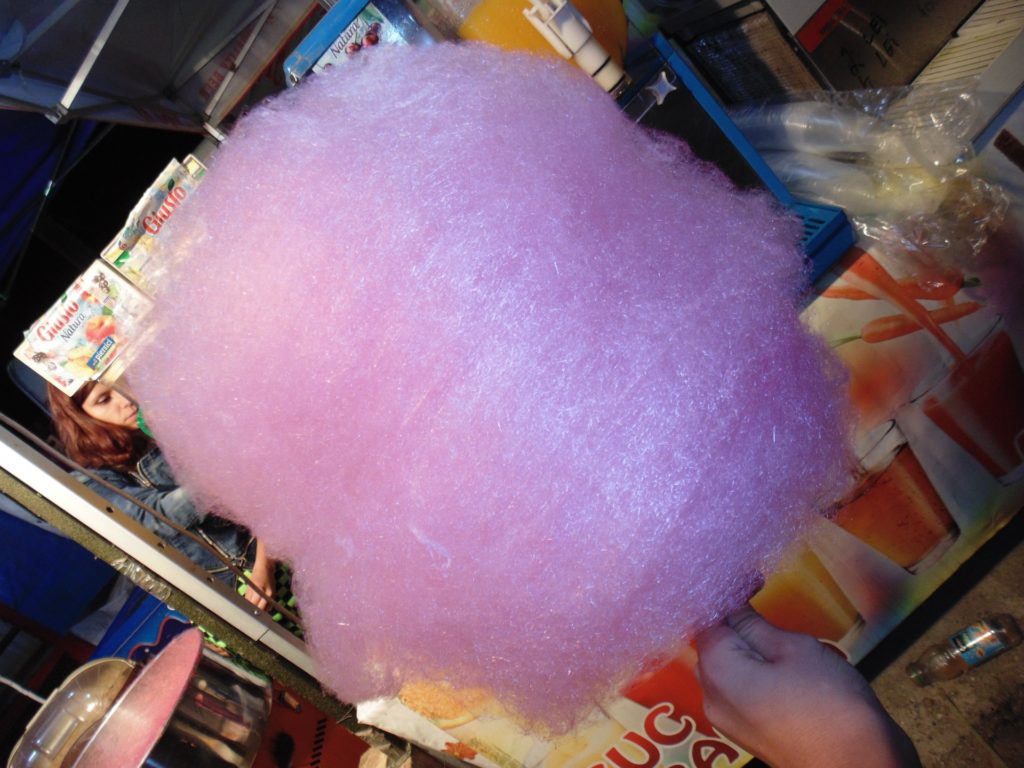
Colors and flavors
Cotton candy’s colors and flavors are created using food coloring and flavorings, which can be combined with the melted sugar before it is introduced into the spinning chamber. Natural and synthetic food colors are available, with synthetic food dyes being the most typically utilized. These dyes are designed to be stable. Hence, they will not degrade or fade over time, allowing the cotton candy to retain its brilliant color.
You might also like: The Functions Of Invert Sugar In Food
Colors can vary depending on the manufacturer and the market they are targeting. In the United States, pink and blue cotton candy is frequently linked with carnivals and fairs. Whereas green and purple cotton candy may be more popular in other countries or areas. Often, food color is based on the flavor profiles of the cotton candy. Blue cotton candy, for example, could be flavored with blue raspberry, while pink cotton candy could be flavored with strawberry.
THE SCIENCE BEHIND COTTON CANDY MAKING
The science of making cotton candy relies on precise temperature and moisture management to achieve the desired texture. It starts by melting sugar, requiring precise heating to transform it from a solid into a liquid state.
To create the thread-like consistency of finished cotton candy, the process of sugar crystallization must be carefully controlled. Several factors influence the formation of sugar crystals, including the temperature of the sugar solution. The temperature must be high enough to melt the sugar, but not so high that it completely breaks down into its component parts, glucose and fructose. Maintaining a dry environment is also crucial during the process to avoid clumping in the finished cotton candy. Even slight moisture can cause the sugar to stick together instead of forming the delicate, thin strands that make cotton candy unique.
As the melted sugar is spun out through the machine’s tiny holes, it is exposed to air, which rapidly cools it down. This rapid cooling prevents large crystals from forming and encourages the creation of small, delicate fibers of sugar, each about 50 microns in diameter.
In addition to sugar crystallization control, the spinning process provides a distinct physical structure in cotton candy strands. Cotton candy’s fluffy texture is created during the spinning process. The spinning motion’s centrifugal force causes the sugar to be stretched and tugged into thin, fragile strands, forming a network of interconnected strands. This structure contributes to cotton candy’s fluffy, cloud-like appearance. Without spinning, the melted sugar would be too dense and heavy to generate the fine, delicate strands.
